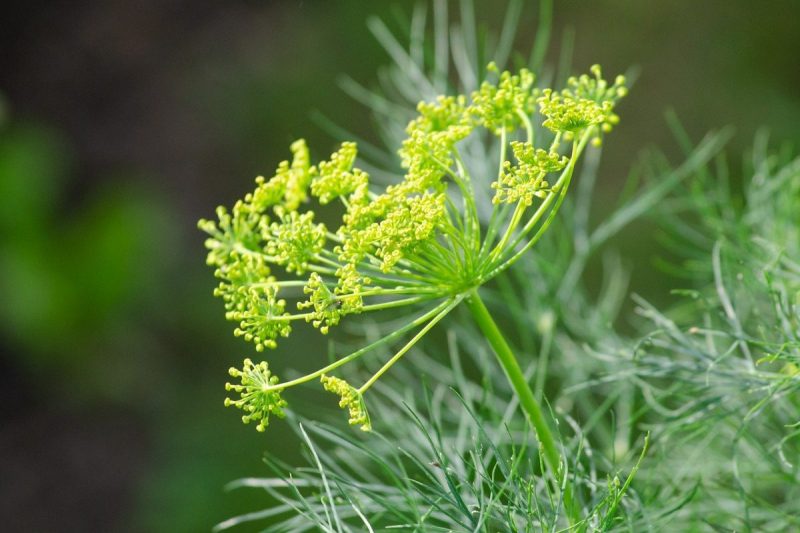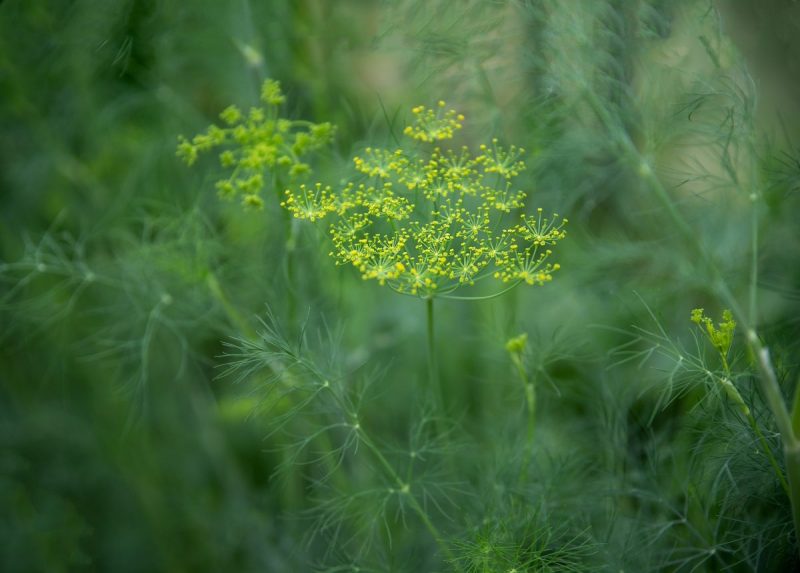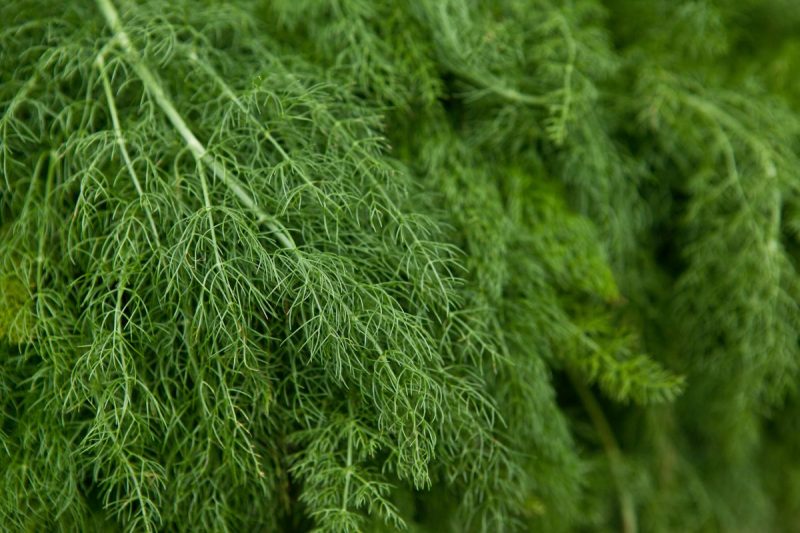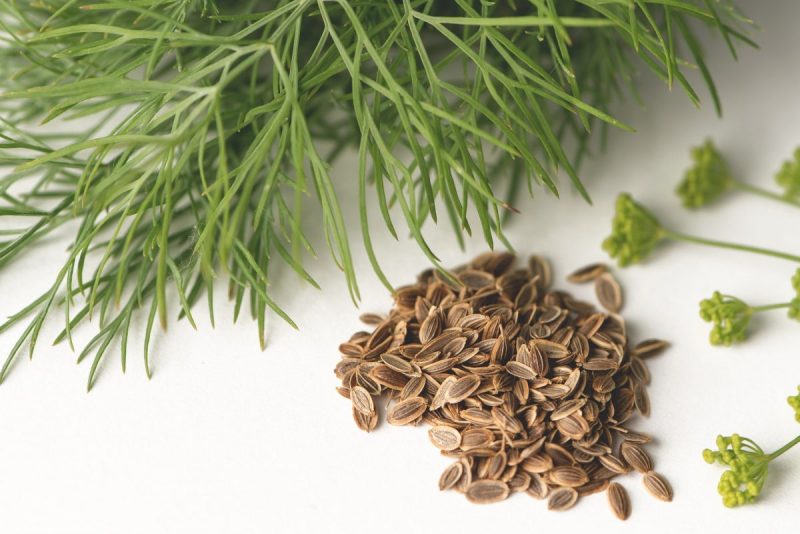Dill – planting, growing and harvesting

Dill (Anethum graveolens) is an annual plant from the Umbelliferae family, frequently used for flavoring food, as well as for its therapeutic properties due to its high content of essential oils and vitamins. The species is native in Asia and the Mediterranean area, been known and used since antiquity. Dill was cultivated for the beauty of its inflorescences by the Greeks and as a medicinal plant by the Egyptians. Today, we meet this aromatic plant all over the world.
Use
All aerial parts are used from this plant. The leaves, inflorescences, and seeds are used for flavoring dishes, and the stem and inflorescence for preparing tins and pickles. In traditional medicine it is used against insomnia, nervous disorders, bloating, etc.
Botanical characteristics
Dill has a short vegetative growth period, the leaves being harvested after about a month from sowing, depending on the environmental conditions. The stem is straight and can reach up to 150 cm in height during the flowering phase. The leaves are filiform, tripinnate, with lobes with large incisions, petiolate and the flowers are yellow and clustered in a compound umbel inflorescence. Flowering takes place during the summer.



Environmental requirements
Dill does not have special requirements in terms of environmental factors. It grows well in moderate temperatures, it can withstand low temperatures but it does not tolerate frost. It germinates at low temperatures, starting from 2-3℃, with an optimum temperature of 15-17℃. At higher temperatures, above 30-35℃, germination and growth can be inhibited, which is why cultivation during the summer is difficult. Also, water management during germination and growth is an important factor for a successful culture. Although it prefers sunny places, dill also grows in lower light conditions and can be grown all year round, if the temperature allows it. In terms of soil, it needs to be loamy, humus-rich, and have a good water retention capacity.
Cultivation
Dill is usually grown in gardens but has expanded as a crop in protected and semi-protected areas, to obtain leaves in the off-season. Thus, it can be grown in polyhouses, hotbeds, or tunnels.
Dill cultivation is done through direct sowing, both in protected areas and in the field. The most important care work for a successful crop is the preparation of the land, given the small seeds of this plant. As a result, the soil must be well tilled for uniform germination.
In spring, as soon as you can enter the field, you can sow dill, keeping 25 cm between rows, about 4-5 cm between plants, and a depth of 1.5 cm. For efficient use of space, they can be sown in 4 rows. A quantity of 7-8 kg of seed per hectare can be used but the amount can vary depending on the germination capacity of the seeds. Sowing in stages is recommended, at intervals of 10-15 days, in order to be able to harvest for a longer period of time.
In the polyhouse, dill can be sown starting in autumn and depending on the temperature, crops can be obtained in the cold season. The plants can be protected with an agriculture foil if temperatures are not negative.
Recommended products
-
You can find products on a different store
Change Store -
You can find products on a different store
Change Store -
You can find products on a different store
Change Store -
You can find products on a different store
Change Store -
You can find products on a different store
Change Store -
You can find products on a different store
Change Store -
You can find products on a different store
Change Store -
You can find products on a different store
Change Store -
You can find products on a different store
Change Store -
You can find products on a different store
Change Store -
You can find products on a different store
Change Store -
You can find products on a different store
Change Store -
You can find products on a different store
Change Store -
You can find products on a different store
Change Store -
You can find products on a different store
Change Store -
You can find products on a different store
Change Store -
You can find products on a different store
Change Store -
You can find products on a different store
Change Store -
You can find products on a different store
Change Store -
You can find products on a different store
Change Store -
You can find products on a different store
Change Store -
You can find products on a different store
Change Store -
You can find products on a different store
Change Store -
You can find products on a different store
Change Store
Care
After crop establishment, watering is done regularly for uniform germination. Care work consists of weed control, soil tillage, irrigation and treatments against diseases and pests.
Recommended products
-
You can find products on a different store
Change Store -
You can find products on a different store
Change Store -
You can find products on a different store
Change Store -
You can find products on a different store
Change Store -
You can find products on a different store
Change Store -
You can find products on a different store
Change Store -
You can find products on a different store
Change Store -
You can find products on a different store
Change Store -
You can find products on a different store
Change Store -
You can find products on a different store
Change Store -
You can find products on a different store
Change Store -
You can find products on a different store
Change Store -
You can find products on a different store
Change Store -
You can find products on a different store
Change Store -
You can find products on a different store
Change Store -
You can find products on a different store
Change Store -
You can find products on a different store
Change Store -
You can find products on a different store
Change Store -
You can find products on a different store
Change Store -
You can find products on a different store
Change Store -
You can find products on a different store
Change Store -
You can find products on a different store
Change Store -
You can find products on a different store
Change Store -
You can find products on a different store
Change Store
In the case of plants grown in pots or in the garden, to ensure their nutrient requirements, a specially formulated fertilizer can be administered regularly.
Recommended products
-
You can find products on a different store
Change Store -
You can find products on a different store
Change Store -
You can find products on a different store
Change Store -
You can find products on a different store
Change Store -
You can find products on a different store
Change Store -
You can find products on a different store
Change Store -
You can find products on a different store
Change Store -
You can find products on a different store
Change Store -
You can find products on a different store
Change Store -
You can find products on a different store
Change Store -
You can find products on a different store
Change Store -
You can find products on a different store
Change Store -
You can find products on a different store
Change Store -
You can find products on a different store
Change Store -
You can find products on a different store
Change Store -
You can find products on a different store
Change Store -
You can find products on a different store
Change Store -
You can find products on a different store
Change Store -
You can find products on a different store
Change Store -
You can find products on a different store
Change Store -
You can find products on a different store
Change Store -
You can find products on a different store
Change Store -
You can find products on a different store
Change Store -
You can find products on a different store
Change Store
Harvesting and storage
Harvesting is done in stages, throughout the year. You can harvest green leaves, inflorescences, seeds, or the whole plant.
All edible portions of the plant can be eaten fresh, after harvest, or dried. The leaves can also be kept frozen. The seeds are harvested after the stems have been harvested and dried beforehand.
Diseases and pests
Powdery mildew (Erysiphe umbelliferarum) is the most common disease of dill plants. It manifests itself as a white felt on the leaves and stems.
Young seedlings can also be affected by Pythium fungi, causing the seedlings to fall off.
Dill can be attacked by the striped bug (Graphosoma lineatum), which causes damage especially in seed crops, as well as by larvae (caterpillars) of various species of butterflies.















































































































































































































































































































































































































































